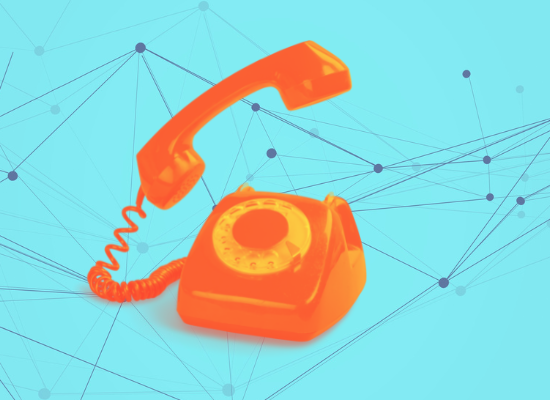
Stephanie Hepburn is a writer in New Orleans. She is the editor in chief of #CrisisTalk. You can reach her at .
Conversations in communities across the nation, whether in jails or inpatient hospitalization, look something like this: “If we release arrestees or discharge patients, where will they go?” Elizabeth Sinclair Hancq and John Snook, colleagues at the Treatment Advocacy Center (TAC), say that at every turn, during COVID-19, no one knows what to do with people experiencing Serious Mental Illness (SMI) and homelessness. The result, says Snook, the center’s executive director, is that an already marginalized population is becoming further so. “People don’t stop getting sick simply because there isn’t somewhere to go. So they fall through the safety net.”
Snook says part of the problem is that many communities during the pandemic are without an established or maintained crisis care continuum, so hospitals and correctional facilities don’t have many options. For example, there is pressure on penal institutions to release people awaiting competency restoration. On the one hand, Snook notes it’s absurd that they would be stuck in jail, and on the other, the facilities’ concerns are valid. “They say, ‘Well, that would be great, but release people where? A homeless shelter? We can’t do any testing, and the behavioral health facilities either aren’t open or aren’t accepting new patients, so people are just going to end up back here or in a homeless shelter. By then, they could be sick, and we don’t have a way to track it.”
Fragmented Systems and Contagion
Snook says he learned a crucial lesson while the director of state and local relations at Habitat for Humanity, where he collaborated on projects with the World Health Organization (WHO) and the U.S. President’s Emergency Plan for AIDS Relief (PEPFAR). The dialogue frequently centered around the fact that without transportation and housing, serving people in need becomes far more challenging. Also, it’s that much harder for people to meet the handwashing and other universal precaution requirements. “They may not have anywhere to wash their hands or shower. You can’t hope to provide treatment for a person if they have to walk five miles to receive it or if they don’t have housing. I don’t think people think of America like that, but that is an issue for the populations we are worried about.” Maneuvering around communities, even without COVID-19 physical distancing restrictions, is a challenge for people who are homeless. This is made even more complicated, says Snook, if the person is experiencing a traumatic brain injury, a substance use disorder, or mental health challenges.
Throughout many communities in the United States, as Major Sam Cochran (ret.), co-chair of CIT International’s Board of Directors, told us in April, the default mental health crisis providers are jails and emergency departments. Both, says Snook, are problematic for mental health recovery and public health during COVID-19. Now, more than ever, you don’t want somebody repeatedly ending up in an emergency department (ED) or jail. “If they do have to go to an ED, because there aren’t adequate community options or because their symptoms warrant it, you don’t want them to board and sit there for weeks.” The reasons are multifold: the ED is a source of infection in hotspot communities, and staff are overwhelmed dealing with the crisis; patients languishing, handcuffed to gurneys without treatment is unethical, doesn’t give them due process, and the experience is traumatic, making recovery all the more challenging. It also, says Snook, makes violence more likely. “Who wouldn’t be more apt to be aggressive after being stuck in an ED for three days or a week?” When a mental healthcare system is highly fragmented—whether because it has always been so or is now because of COVID-19 related closures and restrictions—that means people are bounced from one silo to the other. That, in itself, presents a contagion risk, potentially passing it on not just to one location but multiple. Snook calls it a perfect storm for illness transmission and poor care:
“The reality of high utilization is that people are in and out of the systems and facilities we are most worried about: jails, EDs, and possibly going in and out of an inpatient facility. Basically, they are being set up to be vectors of the illness to no fault of their own, but simply because the system has been broken for so long, that’s how we’ve provided them piecemeal care.”
The Safety Net of Partnerships
Without a robust crisis continuum that is supported and open during the pandemic, all parts of the fragmented mental health system are stuck, leaving loved ones of people experiencing SMI feeling hopeless. Snook says he spoke to a parent who told him the pandemic was exacerbating her son’s symptoms. She told him, “He’s really sick and was already paranoid, and now we are living in a reality with facemasks, making his symptoms worse.” Her son was going 7-Eleven regularly and not following any of the physical distancing rules or universal precautions. The parent told Snook she was reluctant to call the police, but with nowhere else to turn, she did. The officer said, “We don’t want to arrest him, but you’re not going to get him into a hospital right now.” Snook says parents and family members in similar situations don’t know where else to turn. “They are stuck, hoping that something bad doesn’t happen.” The issue isn’t just that some hospitals aren’t accepting patients, but also that they aren’t discharging them. There are fewer community options due to facility closures because of illness, physical distancing challenges, insufficient personal protective equipment (PPE) and testing, and staff shortages. “Suddenly, community care options that were there—like a nursing home or a board and care—are no longer open or no longer accepting patients, so hospitals aren’t discharging.”
During a pandemic is an unlikely time to build out a much needed mental health crisis infrastructure, but, says Hancq, research director at TAC, leaders can tap into existing partnerships and networks. The national nonprofit hosts regular meetings for Assisted Outpatient Treatment (AOT) programs throughout Ohio, which allow leaders to come together, learn best practices from one another, and talk through challenges. In a state with 88 counties and varying population densities, the programs are vastly different. Some have 12 patients, while others have 200. “The problems they face don’t have prescriptive solutions. There’s no one size fits all, which applies broadly to mental healthcare systems throughout the United States.”
In April, a magistrate joined the call and expressed challenges she was having getting a program off the ground during the pandemic. Participants on the call shared what COVID-19 steps they had taken within their own programs, suggesting that the magistrate put to use connections within the group. “For many of the programs, this group has allowed them to have the necessary coordination in place—between the state hospital, the judicial system, and treatment providers in the community—to continue to serve people despite an ongoing pandemic.” The result, Hancq notes, is that, unlike in many other hospitals throughout the country, state hospitals in Ohio have been able to transition people to assisted outpatient programs in the community.
Gaps and Innovations in Telehealth
Mental health professionals have long hoped and pleaded for strides in Telehealth. It’s happening, and while it’s a landmark moment for the field, there have been some hiccups around access and availability. Hancq says that for people experiencing SMI and who are homeless, the challenges are even starker. She notes that talking on the phone or by video can be difficult for people who experience auditory hallucinations or disordered thinking. Developing trust and fostering a connection with a new client may pose more difficult over the phone or through video sessions than in person. It means that treatment providers will need to find unique ways to address these issues, but there are also logistical hurdles. “How can we ensure people have a safe, confidential space for dialogue. If the patient is an unsheltered, homeless person, where can they charge their phone?” Hancq says she’s spoken to caseworkers—whose facilities are closed because of the pandemic—who have been driving out to patients and meeting in their car, with “the provider sitting in the driver’s seat, and the patient sitting as far as possible on the rear passenger side.” “It’s the only way they can meet.”
Family Visits
Hancq points out that it’s not just patients who are falling through the cracks, but also families with loved ones experiencing SMI who are in inpatient hospitalization. She says that one of the goals of inpatient care is building family engagement because “ultimately, the person will be discharged and need a support network to help them maintain stability and recovery.” Also, she points out, family members and patients look forward to seeing one another. “It’s a much-anticipated break-in-the-day for people who are hospitalized.” Across the nation, state hospitals and psychiatric residential treatment centers have limited visitation because of COVID-19-related challenges, such as implementing physical distancing, lack of PPE and testing, and staff shortages. Their concerns are not unfounded: there have been clusters of the virus in psychiatric facilities throughout the nation, including in Nevada, Louisiana, Mississippi, New Jersey, and Washington.
Though not allowing visitors might mitigate the spread of the virus in a facility, Hancq says it also leaves families even further disconnected from their loved ones, uncertain of how they’re doing. “Family members are frustrated. They often know their loved ones best and can identify early signs of decompensation but aren’t able to connect during a time when people need it more than ever.” The virus, and the necessary physical distancing, has increased isolation everywhere in the country, and people who are hospitalized are particularly impacted. It has also, points out Hancq, increased symptomology in people hospitalized with SMI who experience paranoia and anxiety. That’s why communication is vital: it keeps people feeling secure and safe during a time of continued uncertainty. “A woman told me that her loved one called from inpatient hospitalization, worrying about the virus. The hospital wasn’t transparently sharing information, and it was confusing for the patient, triggering an episode of paranoia.” The woman felt that had she been able to be part of the communication, it would have mitigated the episode.
Sinclair Hancq says that communication is always essential, but that it’s particularly true during the pandemic. Step number one, she says, is communicating with families about protocols and policies, and what changes are taking place to protect patients. “Treatment providers in inpatient and residential care should be communicating with families of patients regularly to let them know what is going on in their facility and to help reassure them that their loved ones are safe.” The second step, she notes, is to facilitate communication between patients and family members, using virtual video for face-to-face calls, which fosters connection. Since cellphones aren’t typically permitted in inpatient psychiatric facilities, to maintain connection and communication, some psychiatric hospital staff are using their personal iPads to facilitate televisits between patients and their families.
Challenges to Accessing Technology
Launched in 1985 and expanded to include cell phones in 2005 and broadband in 2016, the FCC’s Lifeline program is designed to give access to technology to people who participate in specific federal assistance programs, like Medicaid or the Supplemental Nutrition Assistance Program (SNAP), or whose income is at or below 135% of the federal poverty guidelines. Because of COVID-19, the FCC has loosened enrollment regulations, temporarily waiving usage requirements as well as recertification, reverification de-enrollment, and general de-enrollment procedures through June 30th, 2020. The FCC has also ordered that no subscriber be involuntarily removed, and involuntary de-enrollment of existing subscribers during this time will be paused.
Snook says that despite relaxed program requirements during the pandemic, people are having difficulty getting new or replacement phones because they can’t easily obtain or send the requisite documentation. “Records offices are presently closed for in-person appointments, and public libraries are also closed, which is where people who are homeless usually get on the internet.”
iPad Distribution in Oklahoma
To respond to COVID-19, on April 10th, the Oklahoma Department of Mental Health and Substance Abuse began distributing iPads to every city-county health department. Anyone who walks into a department can use the technology to speak with a mental health professional. The person can take the iPad home with them to continue the dialogue and reach mental health providers in their community. This is a program that’s been implemented by Grand Lake Mental Health Center (GLMHC), a community behavioral health organization, since 2016. The Oklahoma nonprofit serves adults, children, and families in 12 counties in the state and has been using iPads to stay connected with its hardest to reach clients. During the pandemic, the center has roughly 3,300 iPads in circulation, creating a virtual bridge, says Snook, between intensive outpatient mental health workers and clients with high-risk needs or those who don’t have transportation, “which is one of the largest barriers for people seeking treatment for mental health or substance use disorders.” The center provides virtual new or continued treatment as well as crisis de-escalation, allowing people to stay in the community. GLMHC has used the program to strengthen community partnerships, not only handing out the one-touch iPads to clients but also to hospitals and Oklahoma law enforcement agencies. This provides for faster face-to-face mental health assessments and fosters collaboration between crisis systems and mental health services. Josh Cantwell, LCSW, PRSS, the center’s CEO, says the program has improved relationships and consequently helped divert people in crisis from the ED, jail, and inpatient hospitalization.
The one-touch aspect of the iPads, says Snook, makes them easy-to-use and thereby maximally effective. Clients can reach their integrated care service providers, including therapists, doctors, nurses, case managers, and housing specialists. Not only does this method help mental health providers connect with their most hard-to-reach clients, but, when physical distancing is critical to flatten the COVID-19 curve, it’s also a way to minimize the spread of the virus because, “in many cases, people’s needs can be addressed remotely.”
Already having established telehealth technology has allowed Oklahoma to more easily expand and continue 90% of their services, but that doesn’t mean other states can’t adopt the innovation. Snook says federal, state, and local governments should take heed because launching similar programs could play a critical role during the COVID-19 pandemic, which has given no hint at ending anytime soon. “Funding is such a vital part of reaching marginalized populations, but leaders are sometimes fearful that they are pouring good money after bad. That’s not what would be happening here. Oklahoma has seen increases in usage and treatment adherence. If leaders make a small investment, getting products like this out into the population would save money on the backend.” The model reduced inpatient stays in its service areas from 1,115 in 2015 to 402 in 2017. Cantwell shared with us in email that stays reduced even further in 2018 and 2019 to 18 and 1, respectively. The estimated savings from 2015-2019—because of decreases in ED and inpatient hospitalization—was $44,876,600. “It’s person-centered care and saves money,” Snook says.
Hancq says leaders at all levels need to ensure that the disparities and inequities in our society don’t get worse during COVID-19, “and that the most vulnerable populations are not left behind.”









